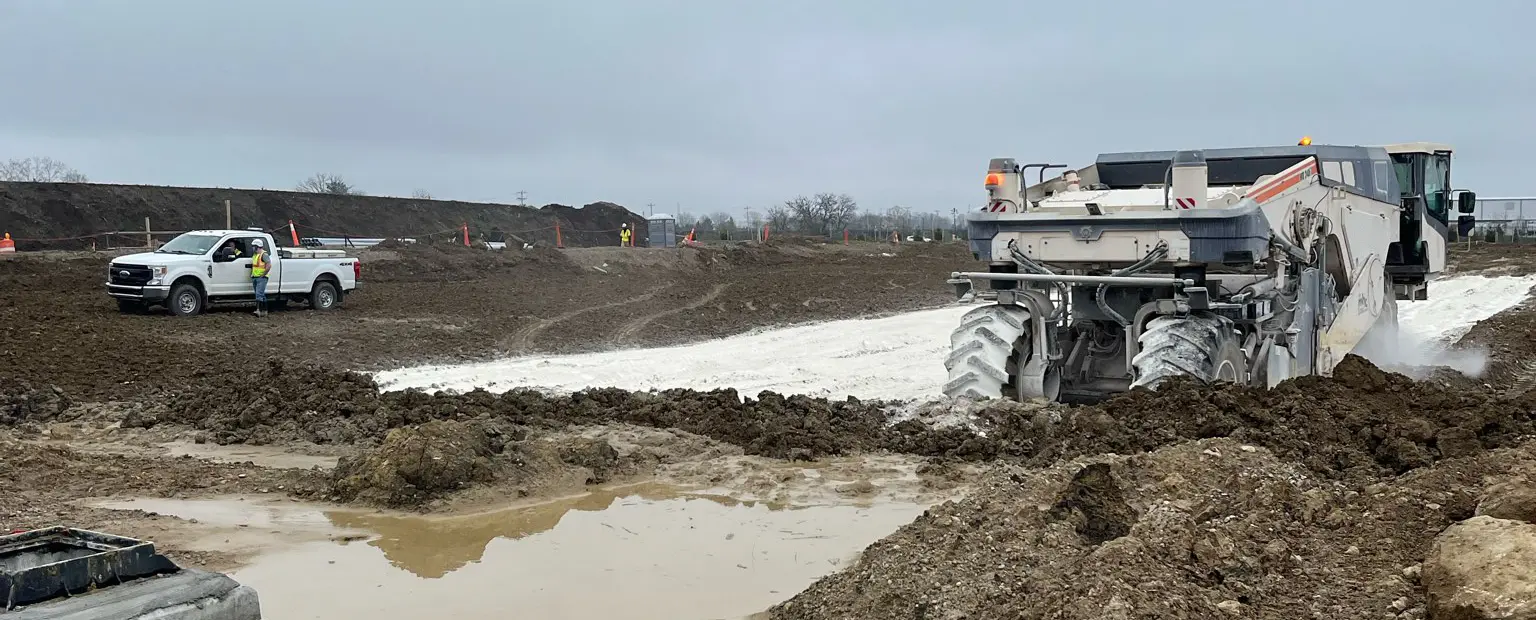Introducing Construction Quicklime (CQL)

At Mintek, we are committed to addressing the unique challenges faced by the construction industry. Our latest innovation, Construction Quicklime (CQL), is designed to enhance efficiency and ease of use compared to traditional quicklime. CQL stands out due to its significantly higher surface area and two times finer particle size distribution, offering multiple benefits to users.
Let’s work together.
CQL Offers All the Benefits of Quicklime – and Then Some
Quicklime has long been a staple in the construction industry, known for its ability to stabilize soil and improve the durability of construction projects. Traditional quicklime, however, comes with certain limitations, such as longer mellow periods and less efficient mixing. CQL addresses these issues, providing a more efficient and user-friendly alternative. In addition to the standard traits experienced with traditional quicklime, CQL benefits include:
Reduced Mellow Period
One of the standout features of CQL is its reduced mellow period. Requiring only a 4-hour mellow period, CQL can be placed and compacted similarly to Portland cement. This allows contractors to expedite their project timelines, reducing downtime and increasing productivity.
Accelerated Early Strength
CQL promotes earlier strength development, creating a stable working platform much faster than traditional quicklime. This accelerated early strength enables contractors to proceed with subsequent construction phases sooner, ultimately speeding up project completion.
Reduced Mixing Requirements
Thanks to its improved homogenization with soil, CQL requires only single-pass mixing for most soil types. This reduces the time and effort needed for mixing, allowing for a more streamlined and efficient construction process.
Spreading Versatility
CQL’s compatibility with a broader range of spreading equipment offers greater flexibility on the job site. This versatility ensures that contractors can use their existing equipment without the need for specialized tools, saving both time and money.
Improved Transfer Rate
The unique sizing of CQL accelerates product transfer from pneumatic to spreader, decreasing detention time. This improved transfer rate means that more material can be processed in less time, enhancing overall efficiency.
Better Flow
CQL’s optimized sizing facilitates better distribution and reduces void space, allowing more material to be added to a spreader than traditional quicklime. This improved flow not only enhances spreading efficiency but also ensures a more uniform application.
Choosing CQL means opting for a product specifically tailored to meet the needs of the construction industry. Its advanced features and numerous benefits make it the ideal choice for contractors looking to improve efficiency and reduce project timelines. CQL is exclusive to Mintek Resources – call today to learn more!
We're here to help you find the best solution for your next project. Let's get started. Give me a call at 937-641-9901.

Josh Weser
Mintek Resources
Related Posts
Tariffs Disrupt Construction: Lime Keeps Projects Moving
Tariffs are reshaping the construction landscape. From cement and steel to aluminum and other essential materials, shifting trade policies are creating ripple effects across the industry. Even when prices hold steady, the uncertainty around future costs and sourcing...
Unlocking Pavement Potential: The Long-Term Value of Chemically Stabilized Subgrades
A Foundation in Crisis America’s roadways are the backbone of its economy and daily life, yet they continue to show signs of chronic underinvestment. According to the American Society of Civil Engineers’ 2025 Infrastructure Report Card, the nation’s infrastructure...
Ground Control: Comparing Lime and Geosynthetics for Long-Lasting Stability
When building infrastructure on weak in-situ soils, a well-designed foundation is essential to ensure long-term resilience. Whether you're constructing roads, embankments, or industrial platforms, ensuring subgrade stability is critical—not just for performance, but...